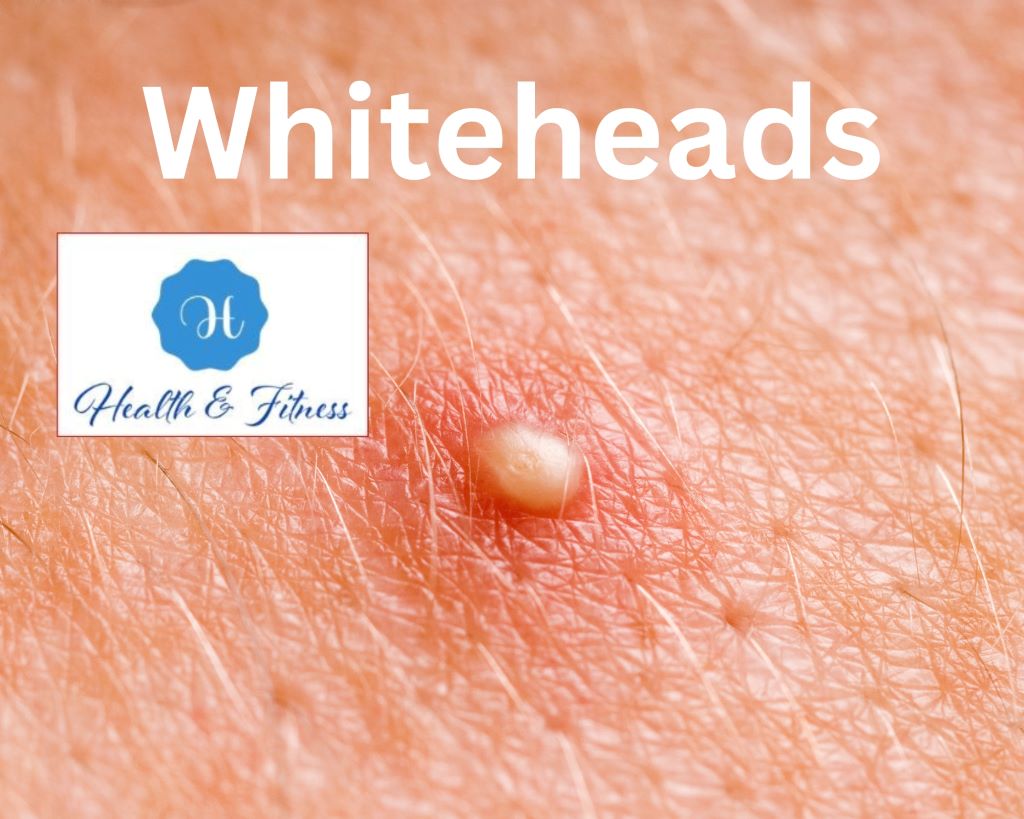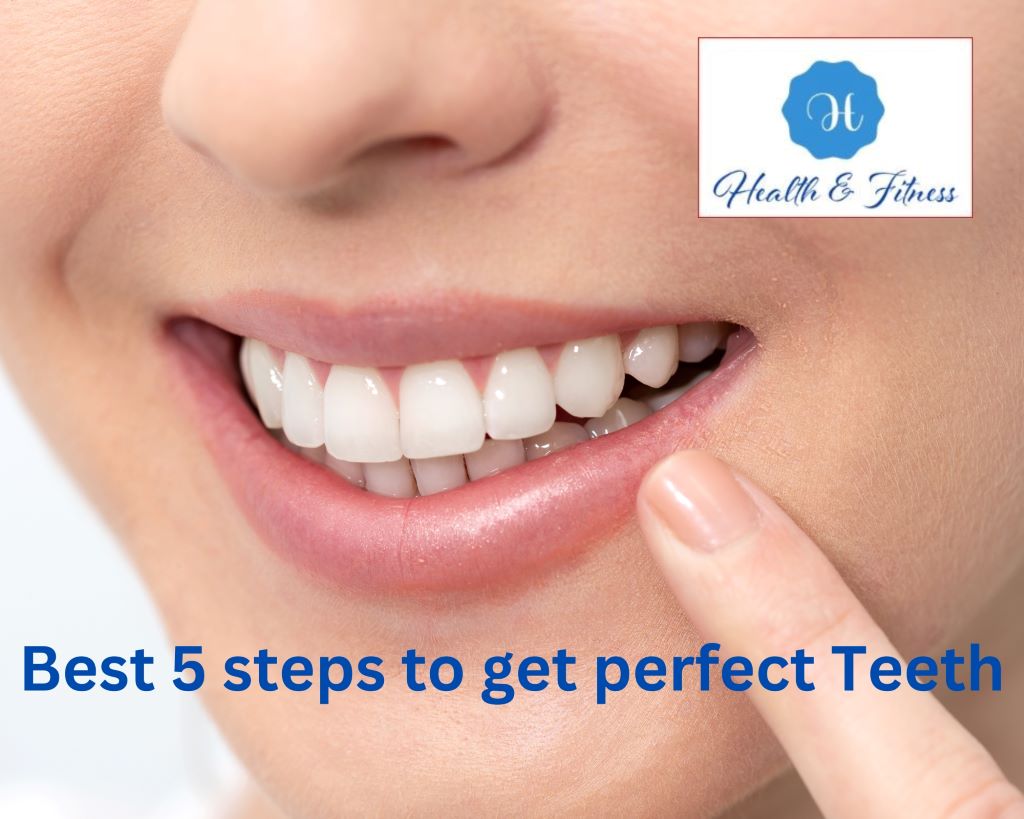Acne: best 12 tips to get rid of Whiteheads
Discover the best 12 tips to effectively get rid of whiteheads and achieve clearer skin. Say goodbye to whitehead with these expert strategies
Introduction
This article will provide the best tips to help eliminate whiteheads, ensuring clearer and healthier skin. The tips discussed in this article are based on proven scientific research and practical experience and are designed to help individuals achieve a clear, acne-free complexion. By following these simple tips, individuals can take control of their skin and effectively treat it.
What exactly are these whiteheads?
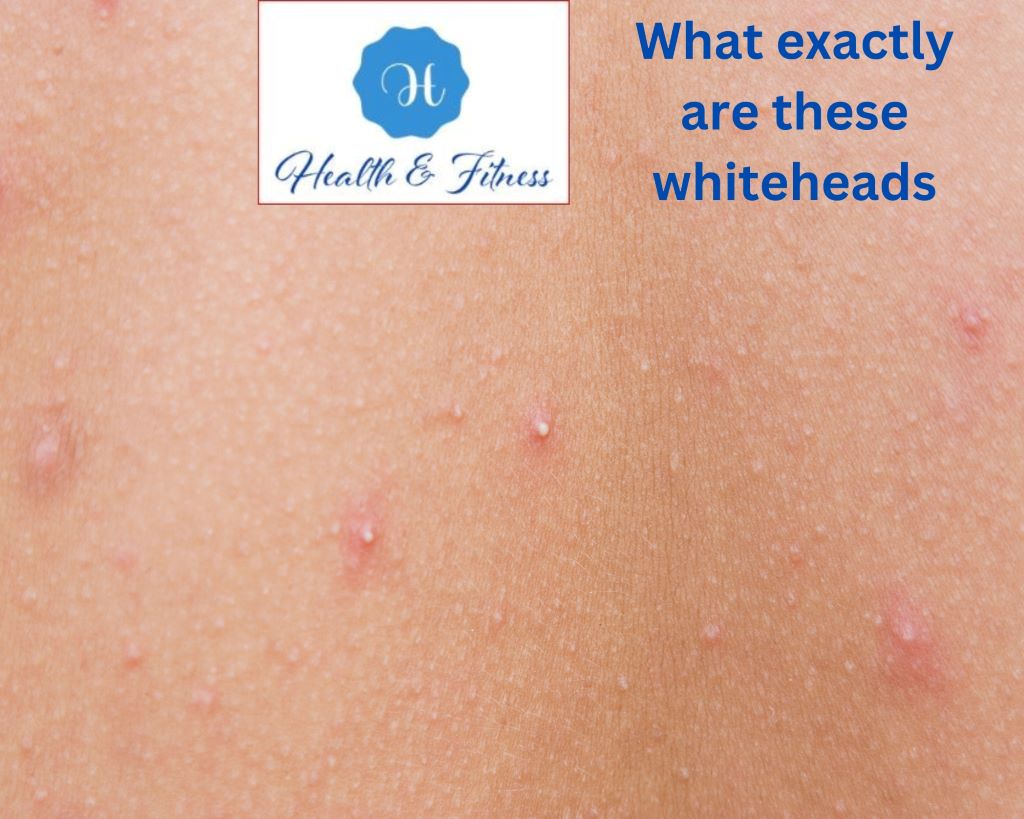
A whitehead is a type of acne lesion that happens when dead skin cells, oil, and bacteria gather in a hair follicle that is clogged.
Instead of blackheads, it has a closed pore and appears as small, raised, white or flesh-toned bumps on the skin.
An overproduction of oil and a buildup of dead skin cells causes whiteheads.
Both things block the hair follicle and make it hard for new hair to grow, which causes a whitehead to form.
It can be a persistent problem for many people but can be effectively treated with proper skin care and lifestyle changes.
The Causes and Factors that Contribute to Whiteheads
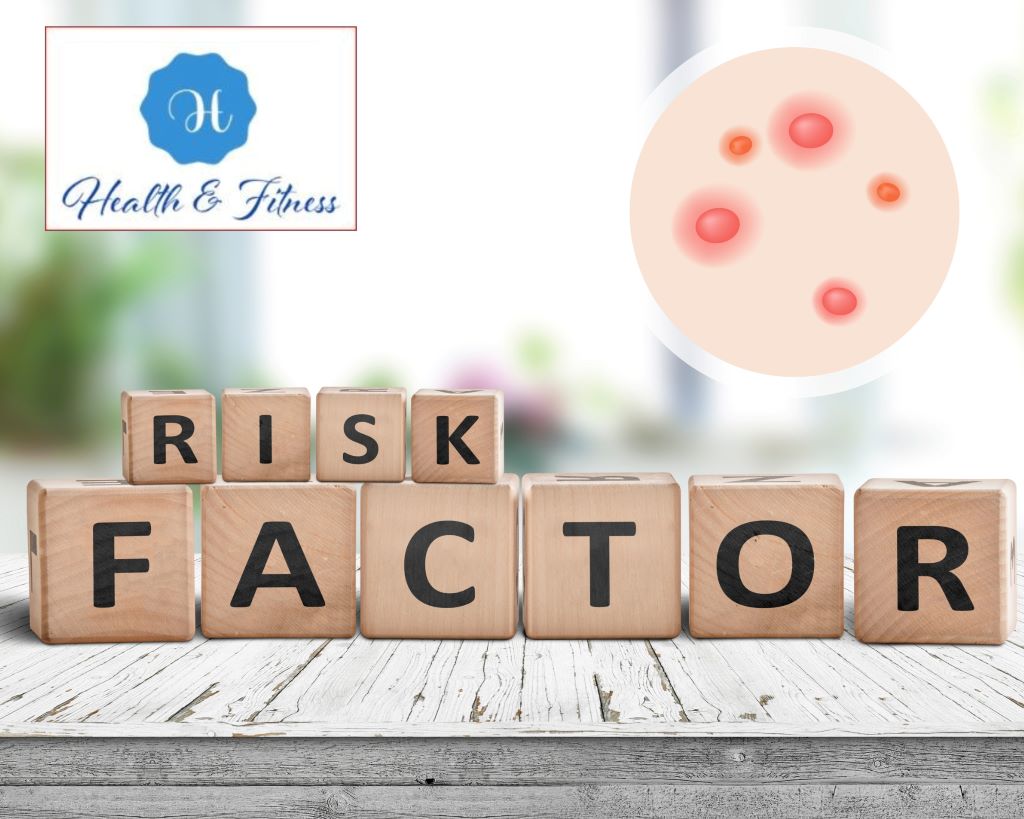
It’s important to remember that everyone’s skin is unique, and what may cause Inflammatory acne in one person may not have the same effect in another.
However, by understanding the causes of it and taking steps to prevent them, individuals can effectively reduce their occurrence and achieve clearer skin.
And here are The Causes and factors that contribute to Whiteheads
1-Hormonal changes:
Hormonal fluctuations, such as during puberty, menstrual cycles, and pregnancy, can increase oil production, forming whiteheads.
Hormones can stimulate the production of sebum, an oily substance that lubricates the skin and hair.
When the hair follicles produce excessive amounts of sebum, it can mix with dead skin cells and clog the follicles, forming Zits
2- Genetics:
Some individuals may be more prone to developing whiteheads because of genetic factors.
If a family member has a history of it or acne, it is more likely that you will also experience the same issue.
3-Poor skin care:
Using skin care products that are greasy or heavy, not removing makeup before bed, and not cleansing the skin properly can contribute to the formation of whiteheads.
When the skin is not properly cleansed, oil, dirt, and makeup can accumulate on the surface, clogging the hair follicles and leading to Inflammatory acne.
4-Diet:
A diet high in sugar and dairy products can trigger sebum production, causing whiteheads to form.
Consuming foods high in refined carbohydrates and dairy can increase insulin levels,
increasing androgen hormones, which can stimulate sebum production.
5-Stress:
Stress can trigger the production of hormones that contribute to the formation of whiteheads. When an individual is under stress, the body releases cortisol, a hormone that can trigger sebum production, forming whiteheads.
Who gets whiteheads?
It can affect people of all ages, genders, and skin types.
However, they are most common during puberty, when hormonal changes can increase oil production, leading to the formation of Inflammatory acne.
They are also common in people with a family history of acne, as genetics can play a role in the development of whiteheads.
Individuals with oily skin are also more likely to develop it,
as the excess oil can contribute to the clogging of the hair follicles.
People who do not adhere to a good skincare routine or who use skin care products that are thick or oil-based are also at a higher risk of acquiring whiteheads.
How long do whiteheads last?
The time that whiteheads last can vary depending on several factors, such as the individual’s skin type, the severity of the whiteheads, and the treatment used.
On average, it can last from a few days to several weeks.
It can persist for several months or longer if not adequately treated. The best way to reduce the duration of whiteheads is to adopt a regular skincare routine that includes cleansing, exfoliating, and moisturizing and to avoid picking or squeezing the whiteheads because they have the potential to cause scarring and further outbreaks.
If it persists despite at-home treatment, visit a dermatologist who can recommend topical or oral medicine to cleanse the skin.
Where do you get whiteheads?
It can develop in any area of the body with hair follicles, but they are most commonly found on the face, neck, chest, and back.
These areas have a higher concentration of sebaceous glands, which produce oil, and are, therefore, more prone to developing whiteheads.
The nose, forehead, and chin are the most common areas where whiteheads occur, as they contain more sebaceous glands.
It can also form on the neck, chest, and back, especially in individuals with very oily skin.
It’s important to note that while whiteheads can occur anywhere on the body, different areas may require different approaches for treatment and prevention.
The top 12 methods for eliminating whiteheads
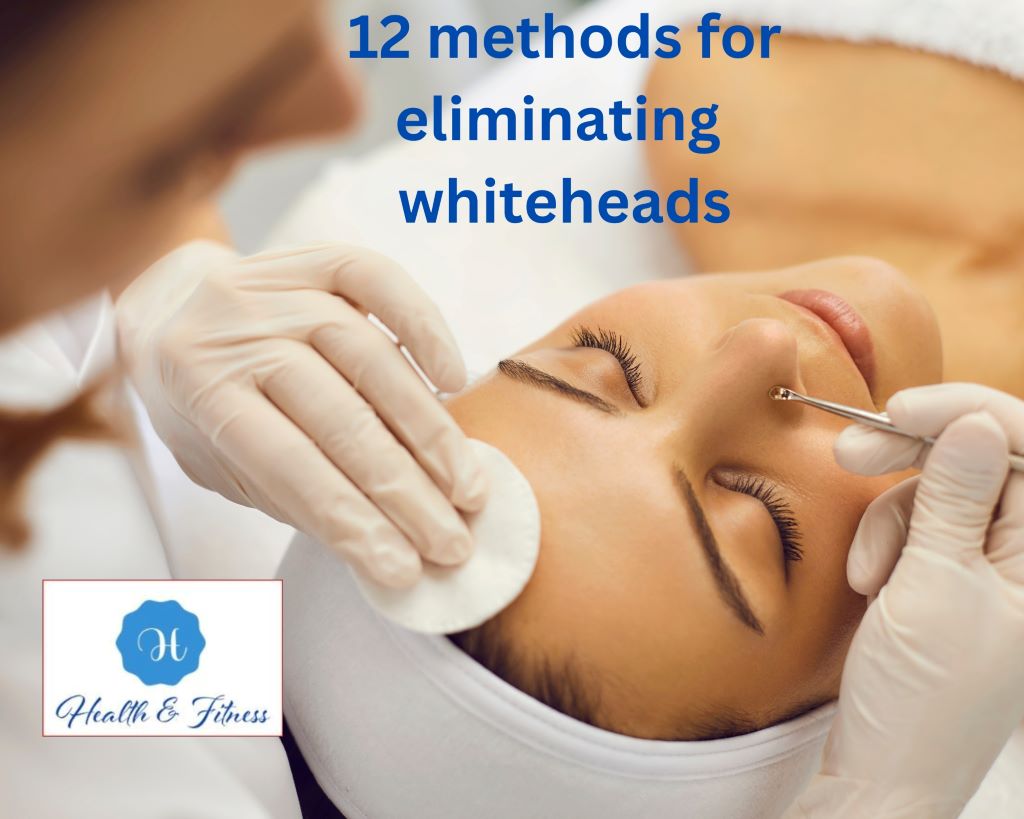
With these tips, individuals can effectively reduce the occurrence of whiteheads and achieve clearer skin. However, remember that everyone’s skin is different, so what works for one person might not work for another.
A personalized approach to skincare and treatment, in consultation with a dermatologist, is the best way to achieve the best results.
The Best 12 Tips to Get Rid of Whiteheads
1-Cleanse your skin regularly:
Cleansing your skin twice a day with a gentle cleanser can help remove oil, dirt, and makeup that can contribute to forming whiteheads.
Choose a cleanser appropriate for your skin type, and avoid using soap that can dry out the skin.
3-Exfoliate:
It happens when dead skin cells build up in the hair follicles. Exfoliation can help get rid of this buildup.
Use a gentle exfoliating scrub or chemical exfoliant, such as salicylic acid, once or twice a week to help prevent the formation of whiteheads.
3-Use non-comedogenic products:
Choose skincare and makeup products labeled “non-comedogenic,” as they are less likely to clog the hair follicles and cause bumps.
4-Keep your skin moisturized:
Oily skin can have its balance restored and whiteheads avoided with regular moisturizing.
Apply a light, non-greasy moisturizer daily, especially after cleansing and exfoliating.
5-Watch your diet:
Consuming a diet high in sugar and dairy products can contribute to forming Acne eruptions.
Limit your intake of these foods and focus on consuming a diet rich in fresh fruits and vegetables.
6-Manage stress:
Stress can trigger the production of hormones that contribute to the formation of whiteheads. Try to manage stress through exercise, meditation, or other relaxation techniques.
7- Avoid picking or squeezing whiteheads:
Picking or squeezing whiteheads can lead to further breakouts and scarring. Instead, use a warm compress to help loosen the oil and gently extract the whitehead using a sterilized extractor tool.
8-Seek the advice of a dermatologist:
If your zits persist despite at-home treatment, it may be necessary to seek the advice of
a dermatologist.
A dermatologist may recommend topical or oral medicines to treat acne and prevent future breakouts.
9- Keep your hands clean:
Frequently touching your face with dirty hands can spread bacteria and oil, forming Acne eruptions
. Wash your hands regularly and avoid touching your face as much as possible.
10- Use a toner:
Excess oil and grime can be removed from the skin, and the skin’s pH level can be maintained, with the help of a toner, reducing the risk of whiteheads.
Choose a toner for your skin type and apply it after cleansing and moisturizing.
11- Avoid wearing heavy makeup:
Heavy makeup can clog the hair follicles and lead to the formation of pimples.
Use lightweight, non-comedogenic makeup products and remove all makeup before sleeping to avoid clogging the pores.
12- Incorporate a weekly mask.
A weekly mask can help unclog the pores and remove dead skin cells, reducing the risk of Pustules.
Choose a mask appropriate for your skin type and follow the manufacturer’s instructions.
My Recommendations
They are a common form of acne that can frustrate and be challenging to treat.
However, with the right approach and a combination of home remedies and medical treatments, it is possible to reduce the occurrence of whiteheads and achieve clearer skin effectively.
Everyone’s skin is different, so what works for one person might not work for another.
A personalized approach to skincare, in consultation with a dermatologist, is the best way to get the most effective results.
Besides following the best 12 tips to get rid of whiteheads, it’s also essential to maintain
a healthy lifestyle and diet, manage stress, and avoid using products that irritate the skin.
With patience and perseverance, individuals can successfully overcome the challenges of Closed comedones and achieve the clear, glowing skin they desire.
Conclusion
If you’re struggling with whiteheads, don’t give up hope. By following these tips and seeking the advice of a dermatologist, you can achieve clearer skin and be on your way to a more confident, radiant you.
Reference
- American Academy of Dermatology. (2021). Acne. https://www.aad.org/public/diseases/acne-and-rosacea/acne
- American Osteopathic College of Dermatology. (2021). Acne: A Common Skin Condition. https://www.aocd.org/page/Acne
- National Institute of Arthritis and Musculoskeletal and Skin Diseases. (2021). Acne. https://www.niams.nih.gov/health-topics/acne
- Mayo Clinic. (2021). Acne. https://www.mayoclinic.org/diseases-conditions/acne/symptoms-causes/syc-20368047
.

